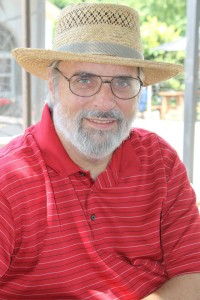Paul Meadors – Liver Recipient
 It was late at night and I couldn’t sleep. I guess that it was because I had slept most of the day in my recliner, or perhaps I knew that the end was near and had that on my mind. Three years before, I was in the doctors office hearing for the first time that I had nonalcoholic steatohepatitis (NASH). NASH cirrhosis is now one of the leading indications for liver transplantation in the United States. I felt fine in 2010 so how could I be sick? I started going to see the doctor on a regular basis and they were tracking my progress, or lack there of.
It was late at night and I couldn’t sleep. I guess that it was because I had slept most of the day in my recliner, or perhaps I knew that the end was near and had that on my mind. Three years before, I was in the doctors office hearing for the first time that I had nonalcoholic steatohepatitis (NASH). NASH cirrhosis is now one of the leading indications for liver transplantation in the United States. I felt fine in 2010 so how could I be sick? I started going to see the doctor on a regular basis and they were tracking my progress, or lack there of.
It’s 2011 now and my Primary Care Physician made the decision that I clearly was getting to the point that I needed to see a hepatologist, so off to a new doctor I went. I could feel changes starting within me. Little things like remembering and balance were giving me problems. Going to the hepatologist I found that my ammonia levels were starting to climb causing more problems with memory. Eventually he recommended me to the Transplant Team at the University Of Kentucky.
Now it started moving fast, tests and more tests. I had so many tests that I believe they knew more about me than all other doctors combined. They decided I was a candidate for a liver transplant and was put on “The List”. My wife and I became very familiar with the hospital and how to get around without getting lost. I started losing weight because I had no appetite and was not eating. I was looking at food and tasting it, but that was all, not even getting one good meal a day even though my wife was making all of my favorite things. I started losing about a pound a day eventually losing well over 100 pounds.
My MELD Score (Model for End-Stage Liver Disease) had always been a 10, which was good. The MELD Score is an equation that is used to determine the severity and need for the transplant and ranges from less than 6 to 40 with 6 being less ill and 40 death is close. In the fall of 2012, my score started climbing quickly, my liver was giving up. I was getting weaker every day. Ammonia was not being processed out of my body and that was causing dementia. I would go to the hospital and a procedure was done to drain the ammonia from my body. This happened several times between October and December.
In January of 2013 I started going to the hospital every week for something, each time staying a few days then returning home. February was a continuation of January except now the ER nurses knew me by name when I came in; I was dying.
It is now about 1:50 in the morning on March 17, 2013 the phone rang and the voice on the other end said, “Mr. Meadors, Yes …. This is ________ (sorry I didn’t catch your name) from the University Of Kentucky Transplant Center. I have good news for you ….. We have a liver for you”. She went on giving me instructions how I needed get my affairs in order and to come into the hospital and they would be waiting for me. That morning, I went into surgery and woke up hours later in the ICU with a new liver.
I think of my hero and his family (they did tell me it was a man within two years of my age) all of the time. I am so grateful that he made the decision to become a donor.
Without him, my wife Sharon, my daughter Sherri, my friends and family, God, and the medical staff at the hospital I would not be here now.
A hero chose to save my life through organ donation and for that I am eternally thankful. So now I am somebody and somebody is part of me.
Update (6.23.22)- Sadly Paul passed away on 6.20.2022 with complications from long covid symptoms. He was a beloved Ambassador and a tremendous friend. He will be missed greatly.